What is Portfolio Diversification?
It is important to recognize the amount of risk you’re willing to take on in order to achieve a diversified portfolio. On this episode of A Wiser Retirement Podcast, Casey Smith, Matthews Barnett, CFP®, ChFC®, CLU® and Brad Lyons, CFP® talk about the importance of portfolio diversification. They talk about modern portfolio theory, the efficient frontier line, allocating your assets, and they offer advice on how to diversify your portfolio.
Listen on Apple Podcasts or watch on YouTube:
SUMMARY:
Modern Portfolio Theory
Modern portfolio theory is a useful tool you can use when diversifying your portfolio. It was originally developed by Harry Markowitz in the 1950s to determine at what level you get the maximum return for any given level of risk you are willing to take. Modern portfolio theory has become widely accepted in the investment community and is now one of the basic principles of investment management. An important thing to keep in mind is it’s all about optimizing your portfolio to where you can achieve your return goal without taking on more risk than is needed.
Choosing Investments to Optimize Your Portfolio
To begin choosing investments that are right for your portfolio, start by listing your options. These options would most likely be asset classes such as large cap US, small cap US, mid cap US, developed foreign, emerging markets, US or global real estate stocks. After choosing asset classes, visit ETF.com to look for the expected rate of return and volatility to see which ones best suit your portfolio. Go through the list you have come up with and allocate funds to each one, the super risky ones being a smaller percentage of the portfolio and the less risky ones being a larger percentage. When allocating your funds, be sure to choose non-correlated investment opportunities. For example, if you are invested in a correlated stream such as large cap and small cap, also invest in non-correlated streams like real estate. It is important to have both because it can help to diversify your portfolio.
Efficient Frontier Line
As an investor, it is important to measure the amount of risk you need to take on to reach your expected rate of return. The modern portfolio theory most commonly uses the efficient frontier line, which can help you do this. The efficient frontier line is an upwardly sloping curve on a chart that demonstrates levels of risk and return for an investment. Keep in mind, anything under the line means you’re taking on too much risk and not getting enough return so try to push yourself up to the line. This can be more difficult for the at home investor. However, by looking at the efficient frontier line, you can utilize expected return ratios and standard deviations for risk to create a portfolio that’s as close to that line as possible.
Diversify Your Portfolio
Start with picking the right fixed income for your unique portfolio. This can be tricky because there are so many kinds of fixed income, each with its own relevancy to a portfolio. If you blend fixed income with stocks, you can raise or lower the amount of risk and return you’re taking on. Bonds should also be incorporated to stabilize the stocks. There are many different bonds, some that are lower risk than others. Be sure to avoid high yield and emerging market bonds because they won’t diversify your portfolio. Only using conservative bonds could be better to start out with since they are less risky. Manage your risk and allocate percentages based on how big your portfolio is. Remember that the larger the portfolio, the larger the percentage you’re risking.
Asset Allocations
To manage your risk and return, maintain your allocations. There are a few different tools you can use to allocate your assets. Vanguard, BlackRock, and State Street have model templates for public use. These templates can help you build a portfolio. You will begin to see if your portfolio is diversified well enough, you’ll have some of your money in the best performing asset classes. Now, if the stock market is in a downturn, weather the storm and don’t move asset classes in the middle of a crisis. Instead, it is important to do it either in a normal market setting or at a market high.
Beware of Mutual Fund Managers
If you are a DIY investor, beware of mutual funds. Fund managers have free reign, so most of the time they throw in riskier investments when they are not needed. In addition, they are inconsistent because they quite often change the way they invest. Instead of using mutual funds right away, a great tool to use is Morningstar‘s x-ray report. Start with putting your portfolio in, run an x-ray report, and learn where your assets are by asset class. This can help those who aren’t using ETFs or index funds understand where the returns are coming from. For a DIY investor, it’s not easy but having a strategy can help you reach your long-term goals. Take into consideration that the more diversification you have within your portfolio, the higher chance you have of success.
Download our white paper on “3 Ways to Grow and Protect Your Portfolio”
TIMESTAMPS:
0:00 Intro
5:05 Modern Portfolio Theory
7:44 Choosing Investments to Optimize Your Portfolio
12:21 Efficient Frontier Line
15:25 Diversify Your Portfolio
22:40 Asset Allocations
25:56 Beware of Mutual Funds Managers
LINKS:
Learn more about Casey Smith and connect with him on Twitter.
Learn more about Brad Lyons.
Learn more about Matthews Barnett.
CONNECT:
Twitter, Instagram, Facebook, LinkedIn, and YouTube.
Learn more about A Wiser Retirement podcast and access previous episodes.
Share This Story, Choose Your Platform!
Wiser Wealth Management, Inc (“Wiser Wealth”) is a registered investment adviser with the U.S. Securities and Exchange Commission (SEC). As a registered investment adviser, Wiser Wealth and its employees are subject to various rules, filings, and requirements. You can visit the SEC’s website here to obtain further information on our firm or investment adviser’s registration.
Wiser Wealth’s website provides general information regarding our business along with access to additional investment related information, various financial calculators, and external / third party links. Material presented on this website is believed to be from reliable sources and is meant for informational purposes only. Wiser Wealth does not endorse or accept responsibility for the content of any third-party website and is not affiliated with any third-party website or social media page. Wiser Wealth does not expressly or implicitly adopt or endorse any of the expressions, opinions or content posted by third party websites or on social media pages. While Wiser Wealth uses reasonable efforts to obtain information from sources it believes to be reliable, we make no representation that the information or opinions contained in our publications are accurate, reliable, or complete.
To the extent that you utilize any financial calculators or links in our website, you acknowledge and understand that the information provided to you should not be construed as personal investment advice from Wiser Wealth or any of its investment professionals. Advice provided by Wiser Wealth is given only within the context of our contractual agreement with the client. Wiser Wealth does not offer legal, accounting or tax advice. Consult your own attorney, accountant, and other professionals for these services.





